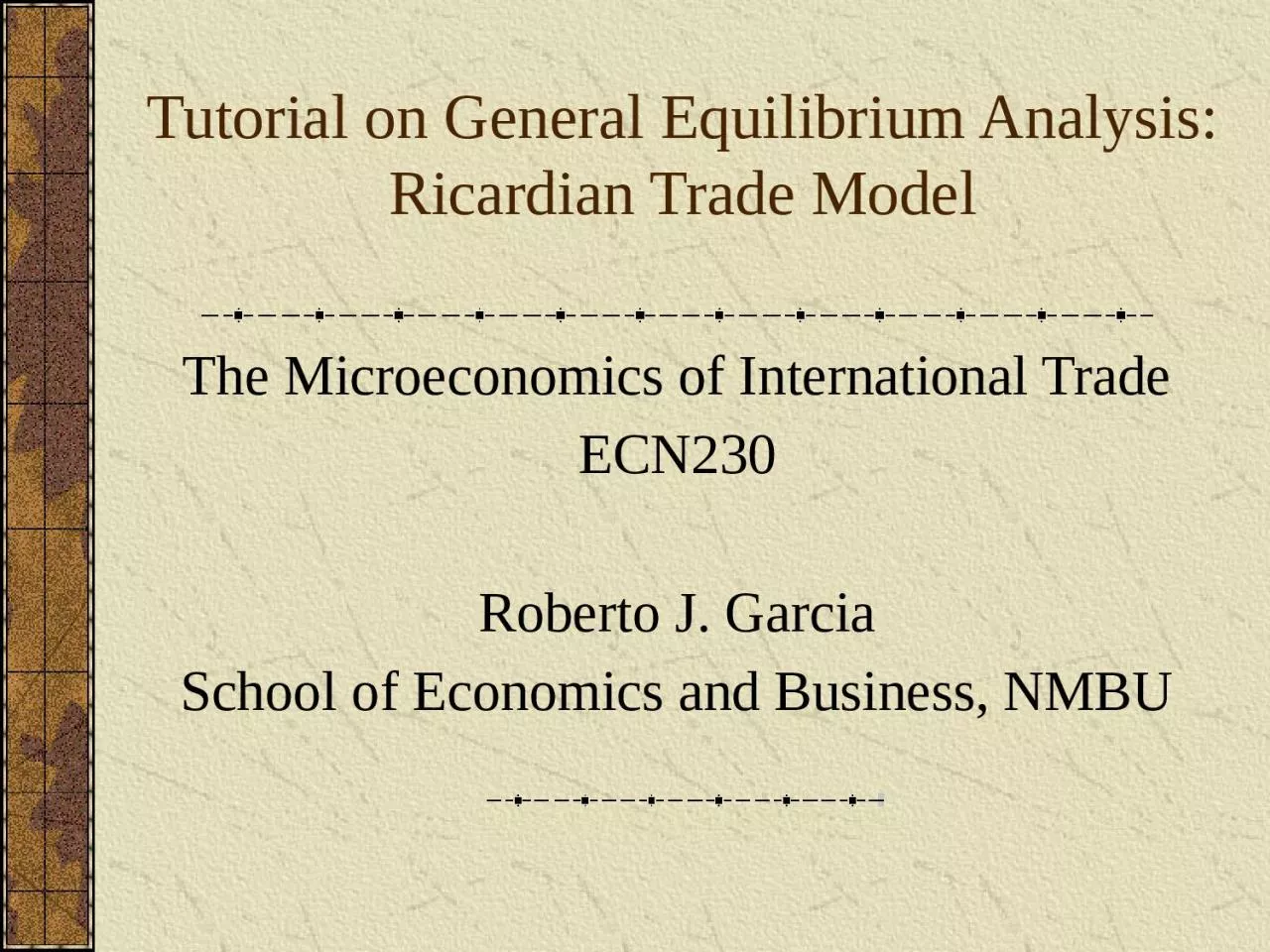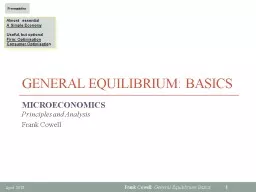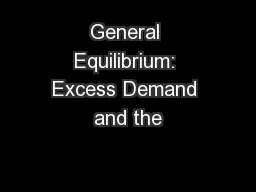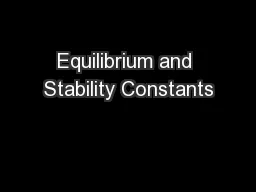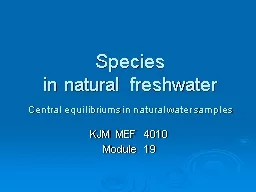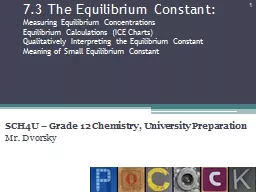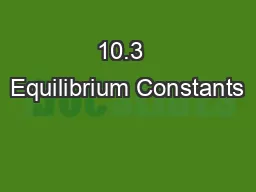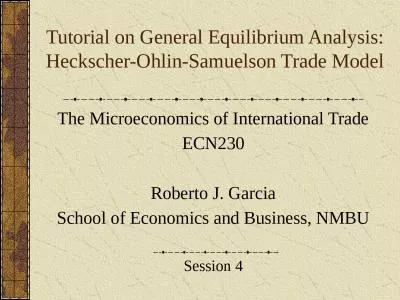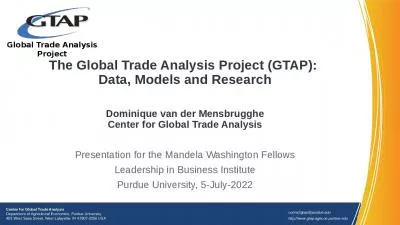PPT-Tutorial on General Equilibrium Analysis: Ricardian Trade Model
Author : phoebe | Published Date : 2023-10-31
The Microeconomics of International Trade ECN230 Roberto J Garcia School of Economics and Business NMBU General equilibrium trade analysis I Ricardian trade model
Presentation Embed Code
Download Presentation
Download Presentation The PPT/PDF document "Tutorial on General Equilibrium Analysis..." is the property of its rightful owner. Permission is granted to download and print the materials on this website for personal, non-commercial use only, and to display it on your personal computer provided you do not modify the materials and that you retain all copyright notices contained in the materials. By downloading content from our website, you accept the terms of this agreement.
Tutorial on General Equilibrium Analysis: Ricardian Trade Model: Transcript
Download Rules Of Document
"Tutorial on General Equilibrium Analysis: Ricardian Trade Model"The content belongs to its owner. You may download and print it for personal use, without modification, and keep all copyright notices. By downloading, you agree to these terms.
Related Documents

